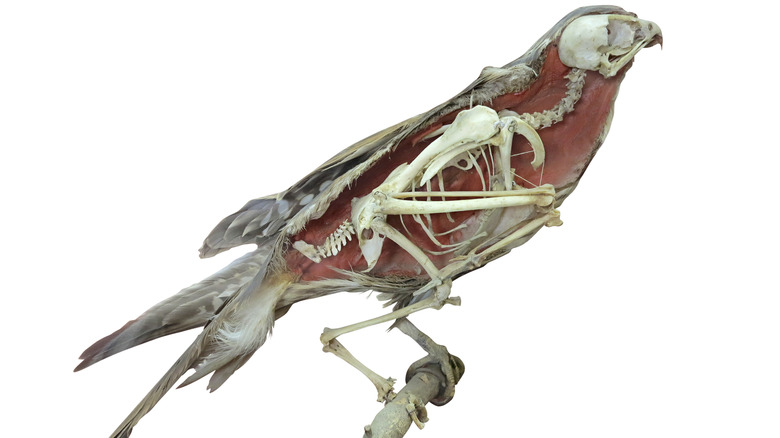Why Birds Have Hollow Bones
Why do birds have hollow bones? You might think the answer is obvious, and you may even have been told by others that hollow bones make a bird lighter. However, today it is frequently argued that this factoid is actually a myth.
Bird skeletons are similar in weight to the skeletons of other animals of the same size, proving that seemingly intuitive answers to scientific questions are often incorrect. It is true that some birds have very light bones, but only because they are very small. Bird bones are actually relatively dense and therefore surprisingly heavy.
In reality, a bird's hollow bones seem to help them in another way — by providing them with increased lung capacity. While scientists have had various suspicions about bird bones for many years, surprisingly little research has been done into their unusual structure until quite recently. In the spring of 2023, pioneering new research from the University of Cambridge helped contribute insightful new data to the debate.
Deep breaths
Birds have evolved a sophisticated anatomy that allows them to launch themselves into the air and stay there with remarkable ease. There are a lot of different factors at play that help birds to do this; most birds have disproportionally muscular breasts, for example — supported by a very large breast bone — to help them flap their wings. The stresses and strains required to power a bird's feathered appendages also require a super-strong heart as well as extra oxygen to keep it all running — and this is where the hollow bones come in.
A bird's bones are specially aerated and actually form part of the lung system by increasing a bird's oxygen-carrying capacity. According to Dr. Matt Wedel from the University of California Berkley, tubes from a bird's air sacs mingle with the bird's skeleton as they grow, creating their characteristic cavern-like appearance.
Compared to mammals, birds have a relatively complicated respiratory system with two sets of air sacs (one set at the front and one at the back), and they can even take in air when they exhale. According to Wedel birds have inherited this clever pneumatic system from their scaley ancestors, the dinosaurs — some of which also had hollow bones.
Does size matter?
Although it is now generally believed that the hollowness of bird bones has little to do with weight, recent research by Burton et al. published in the Proceedings of the Royal Society for Biological Sciences has confirmed a correlation between the size of birds and bone hollowness. Scientists were able to confirm their suspicions about bird bones using detailed CT scans that can detect the difference between bone marrow and air. They found that for one reason or another, large birds in particular have a greater proportion of air-filled pneumatic bones than other smaller birds.
Crucially, birds with many pneumatic bones do not lose out in terms of bone strength and durability. Although bird bones are hollow, they are known to be very dense and surprisingly heavy. Special girder-like struts within the hollows also help to provide extra strength to the bones, acting like the support beams on a bridge or the iron beams in a building.


